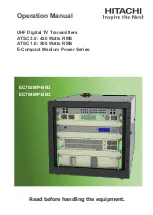
PGX 10 0 A N D PA X 10 0 |
P R E SSU R E T R A N SM I T T ER S | O I/P G X /PA X 10 0 - EN R E V. C
15
. . .5 Transmitter wiring
Wiring procedure
Follow these steps to wire the transmitter:
• Remove the temporary plastic cap from the electrical connection port of the transmitter housing.
• This connection port has an internal thread. Various adaptors and bushings can be fitted to these thread to comply with plant
wiring (conduit) standards.
• Remove the housing cover. In a Hazardous area / Location installation, do not remove the transmitter cover when power is
applied to the unit.
• Run the cable through the cable gland and the open port.
• Connect the positive lead to the + terminal, and the negative lead to the – terminal.
• Plug and seal the electrical ports. Make sure that when the installation has been completed, the electrical ports are properly
sealed against entry of rain and/or corrosive vapors and gases.
General Risks .
Cable and cable gland must be in accordance with the intended type of protection (e.g. intrinsically safe) and degree of
protection (e.g. IP6x according to IEC EN 60529 or NEMA 4x). See also the addendum for “EX SAFETY” ASPECTS AND “IP”
PROTECTION.
• If applicable, install wiring with a drip loop. Arrange the drip loop so the bottom is lower than the conduit connections and the
transmitter housing.
• Before reassembling cover, the integrity of the cover O-ring must be checked. If damaged it must be replaced with an original
spare part. A slight grease layer should be applied for proper lubrication.
• Put back the housing cover, turn it to seat O-ring into the housing and then continue to tighten until the cover contacts the
housing metal-to-metal. The cover must be closed with a 30/35 Nm tightening torque.
Grounding
Pressure transmitter housing should be grounded or earthed in accordance with national and local electrical codes.
Protective grounding terminals (PE) are available outside and/or inside the housing of the transmitter. If ordered, both ground
terminals are electrically connected and it is up to the user to decide which one to use. The most effective transmitter case
grounding method is a direct connection to earth ground with impedance equal to or less than 5 ohm.
WARNING
















































